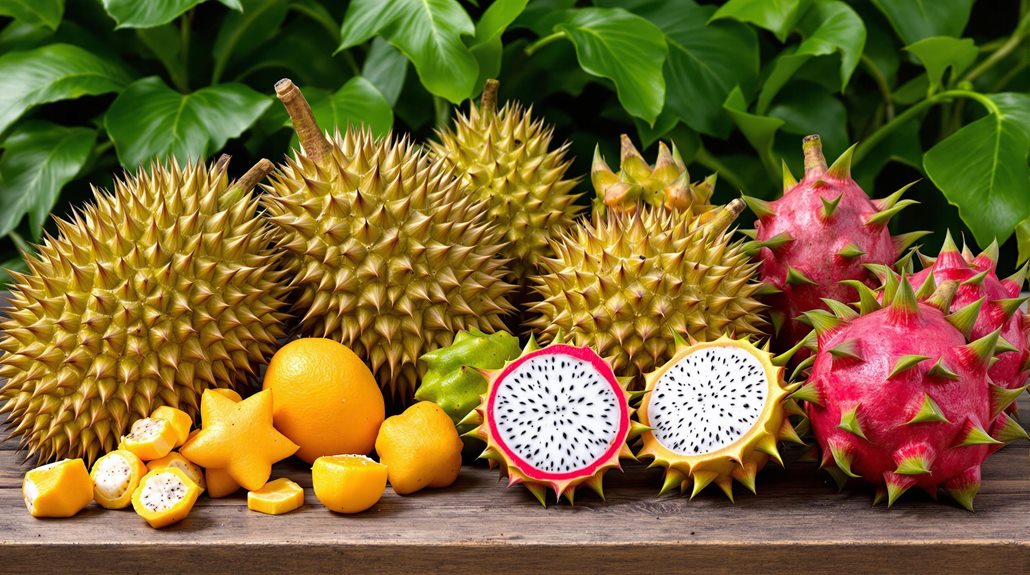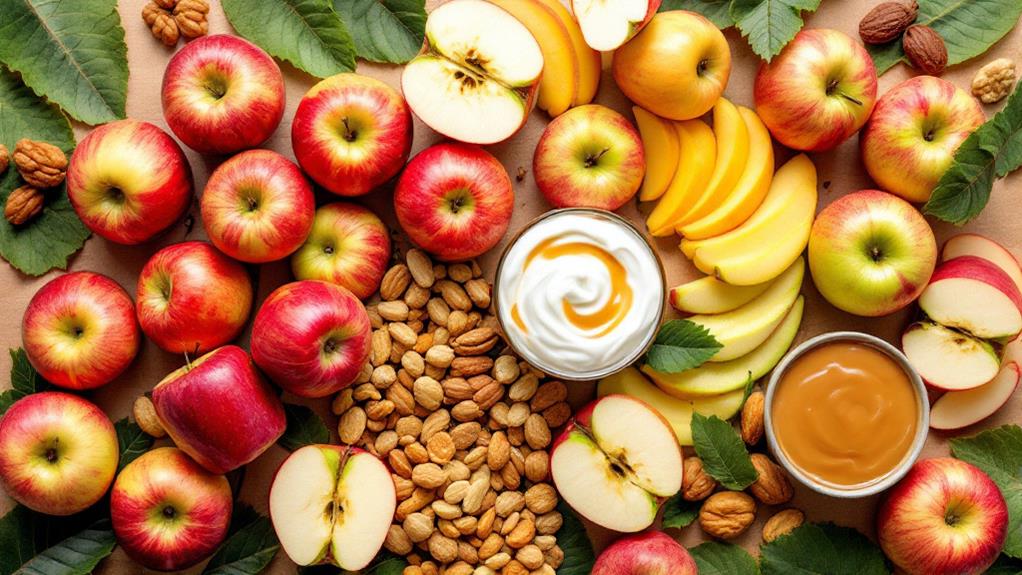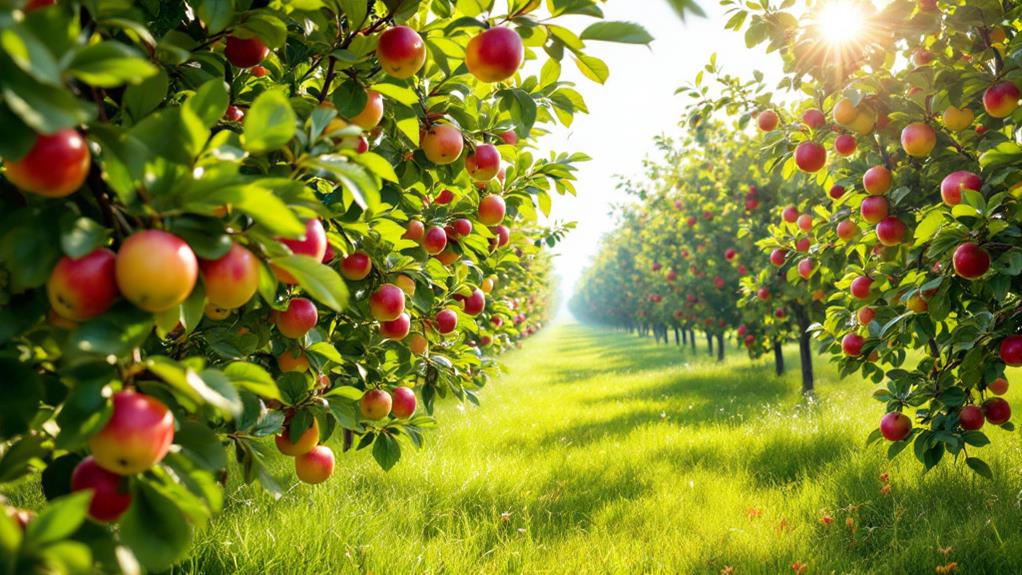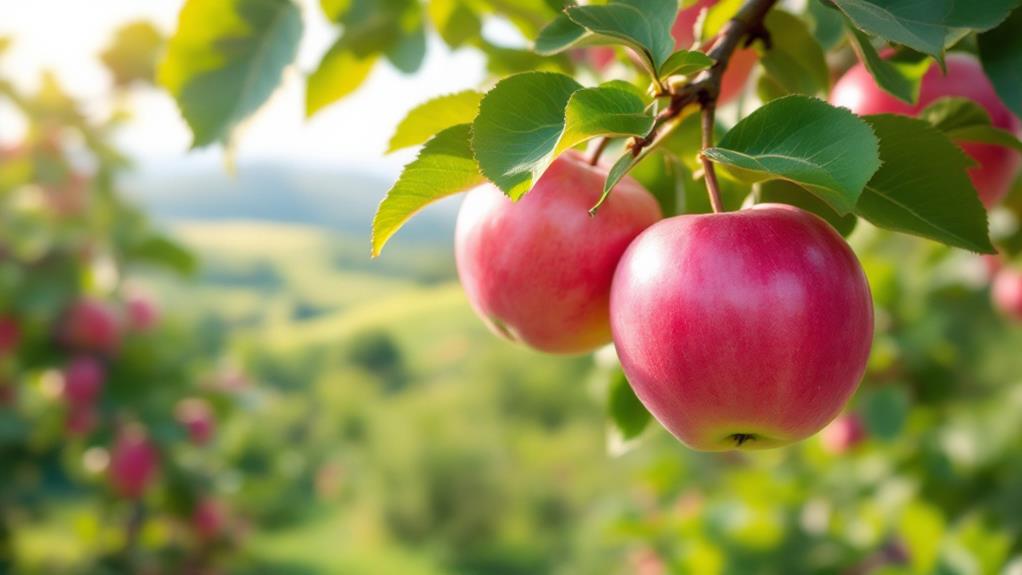A Brief History of Apples: From Ancient Origins to Modern Cultivation
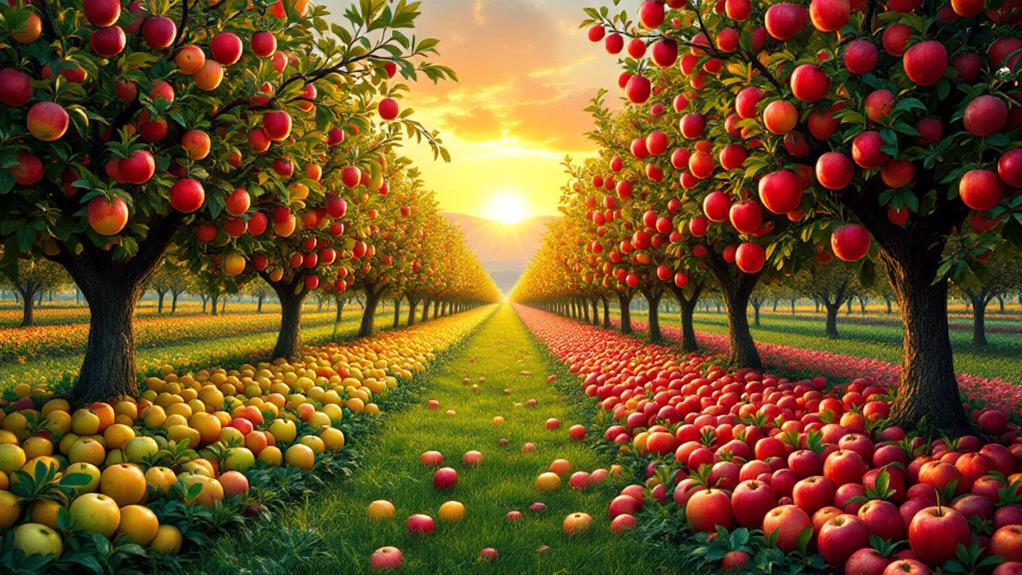
You might be interested to know that apples originate from Central Asia's Tien Shan Mountains, specifically Kazakhstan, where they were collected as far back as 10,000 years ago. Ancient civilizations like the Egyptians, Greeks, and Romans mastered early cultivation techniques. Apples were crucial to prehistoric ecosystems, relying on megafauna for seed dispersal. Culturally, they symbolize knowledge and temptation, prominently featuring in myths. Early grafting methods by Greeks and Romans led to the diverse apple varieties seen today. Modern challenges include climate change and maintaining genetic diversity. There's a fascinating exploration to unfold about this iconic fruit.
Origins in Central Asia
Imagine biting into a crisp apple and tracing its origins back to the rugged Tien Shan Mountains in Kazakhstan. It's here, situated in this remote region, where the wild species Malus sieversii initially flourished, marking the birthplace of the apple. These wild apples have been part of Central Asia's landscape for millennia, with archaeological evidence showing that early humans collected them over 10,000 years ago. As you enjoy your apple, consider how these ancient seeds were once scattered across the land, possibly helped by ancient megafauna, leading to the spread of apple species.
Fast forward through history, and you'll find that these wild apples eventually crossed paths with human innovation. They were cultivated and domesticated, transforming from their wild origins into the apples we cherish today. Genetic studies reveal that modern cultivated apples are hybrids of at least four wild populations, all tracing back to Central Asia. This genetic lineage underscores the apple's rich history and the crucial role the Tien Shan Mountains played. The city of Almaty, known as "Father of the Apples," reflects this deep-rooted cultural significance. So, every time you savor an apple, you're partaking in a story thousands of years in the making.
Ancient Cultivation Practices
As you investigate the ancient cultivation practices of apples, you'll find that these methods stretch back thousands of years, shaping the fruit we enjoy today. Archaeological evidence reveals that apples have been cultivated and collected for over 10,000 years across Eurasia. This long history of apple cultivation has seen a range of creative techniques and cultural exchanges.
- Egyptian Orchards (1300 BC): The ancient Egyptians planted apple orchards along the Nile Delta, marking some of the earliest known efforts in apple cultivation. These practices laid a foundation for future agricultural advancements.
- Greek Grafting (800 BC): The Greeks perfected grafting techniques, which allowed for the propagation of desirable traits and improvements in fruit quality. This method guaranteed that new apple trees bore fruit identical to the parent tree.
- Roman Innovations (200 BC): Romans introduced apple orchards to Britain, using grafting and selective breeding to improve apple size and sweetness. These practices fundamentally changed how apples were grown and consumed.
- Silk Road Exchange: The Silk Road played an essential role in spreading an array of apple varieties, which led to hybridization and the development of larger, more flavorful fruits. This exchange showcases the impact of trade on ancient cultivation practices.
Role of Megafauna

While ancient cultivation practices laid the groundwork for modern apple farming, the true story of apples begins much earlier with their interaction with megafauna. Imagine a world where large fruits dangled from trees, their size and sweetness designed to attract ancient megafauna like the woolly mammoth. These giants played a essential role in the evolution and seed dispersal of apples. As they feasted, they swallowed apple seeds whole, which would later be deposited elsewhere, thanks to the megafauna's digestive processes.
This mutualism between apple species and ancient megafauna was key to maintaining biodiversity and the spread of apple varieties across prehistoric ecosystems. Without these large mammals, many apple species would've struggled to propagate, as their fruits were simply too large for birds and smaller creatures to disperse effectively. The extinction of these megafauna marked a significant decline in natural seed dispersal mechanisms, impacting wild apple populations.
Fossil and genetic evidence reveal that large fruits existed millions of years before humans began cultivating apples, underscoring the essential historical role these animals played. The disappearance of these megafauna didn't just alter apple evolution; it reshaped entire ecosystems, highlighting their irreplaceable role in maintaining ecological balance.
Cultural Symbolism
Mystique surrounds the apple, elevating it beyond mere sustenance to a powerful symbol in diverse cultures. From ancient origins, it has woven itself into the fabric of mythology and folklore, representing both knowledge and temptation. The biblical "forbidden fruit" and the apple of discord in the Trojan War illustrate this dual symbolism. However, the apple's cultural significance extends far beyond myths.
- Health and Wellness: The proverb "an apple a day keeps the doctor away" underscores its association with health and wellness, a belief rooted in folklore since the 19th century.
- Culinary Traditions: Apples have been central to culinary traditions worldwide. They're celebrated in festivals that honor the harvest, reflecting their role in seasonal rituals.
- Heritage and Identity: In Kazakhstan, apples are more than just fruit; they're a part of national heritage. Almaty, translating to "Father of the Apples," highlights this identity symbol.
- Ancient Depictions: Ancient murals often illustrated apples, indicating prosperity and cultural significance, reinforcing their historical importance.
Techniques in Grafting
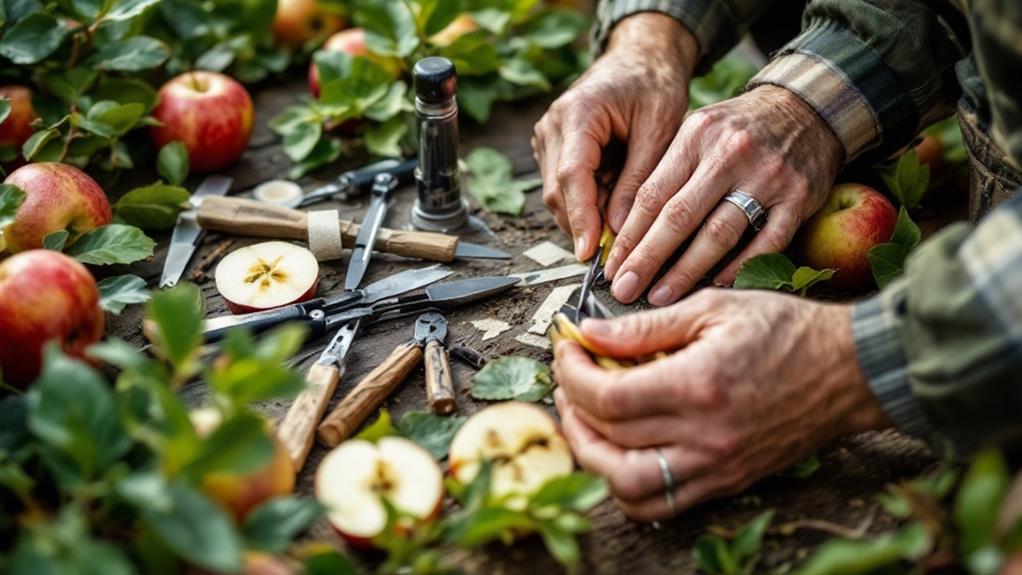
Grafting stands as a key technique in apple cultivation, allowing growers to propagate specific traits by joining a cutting from one apple variety to the rootstock of another. This horticultural technique is fundamental for ensuring that new trees produce fruit true to their parent variety. By combining the best characteristics of different apple varieties, you can improve disease resistance and boost fruit quality, driving overall cultivation success.
Dating back to ancient times, grafting was used by the Greeks and Romans to develop larger and sweeter apples. This practice greatly influenced the apple varieties we enjoy today. The process involves selecting a scion, the cutting from a desirable apple variety, and attaching it to a compatible rootstock. This union is critical, as the compatibility of the scion and rootstock determines the health and productivity of the resulting tree.
Timing and technique are everything in grafting, and getting these right is essential. Modern workshops, such as those by The Orchard Project, continue to teach these time-honored skills, reflecting their enduring relevance. With grafting, you're not just growing an apple tree; you're cultivating a legacy rooted in centuries of horticultural knowledge.
Challenges of Modern Cultivation
As you investigate the rich tradition of grafting in apple cultivation, it's significant to recognize the hurdles facing modern growers. The challenges are multifaceted, driven primarily by climate change and its impact on the traditional growing conditions for Malus domestica. Rapid environmental shifts demand creative solutions in apple cultivation to maintain productivity and quality.
Breeding programs are now turning to Malus sieversii, the wild ancestor of modern apples, to bolster genetic diversity and develop varieties resilient to climate-induced stresses. This adaptability is essential as modern apple varieties often lack the disease resistance needed to combat evolving threats.
Consider these key challenges:
- Climate Change: Shifting weather patterns threaten the ideal conditions for apple growth, requiring new strategies for resilience.
- Genetic Diversity: Over-reliance on a few varieties has diminished genetic diversity, increasing vulnerability to pests and diseases.
- Disease Resistance: Modern apple varieties face heightened susceptibility, necessitating improved disease resistance through sustainable agricultural practices.
- Breeding Programs: Efforts focus on integrating traits from Malus sieversii to develop hardier, more adaptable varieties.
Addressing these challenges guarantees the future of apple cultivation remains robust amidst ever-changing environmental conditions.

